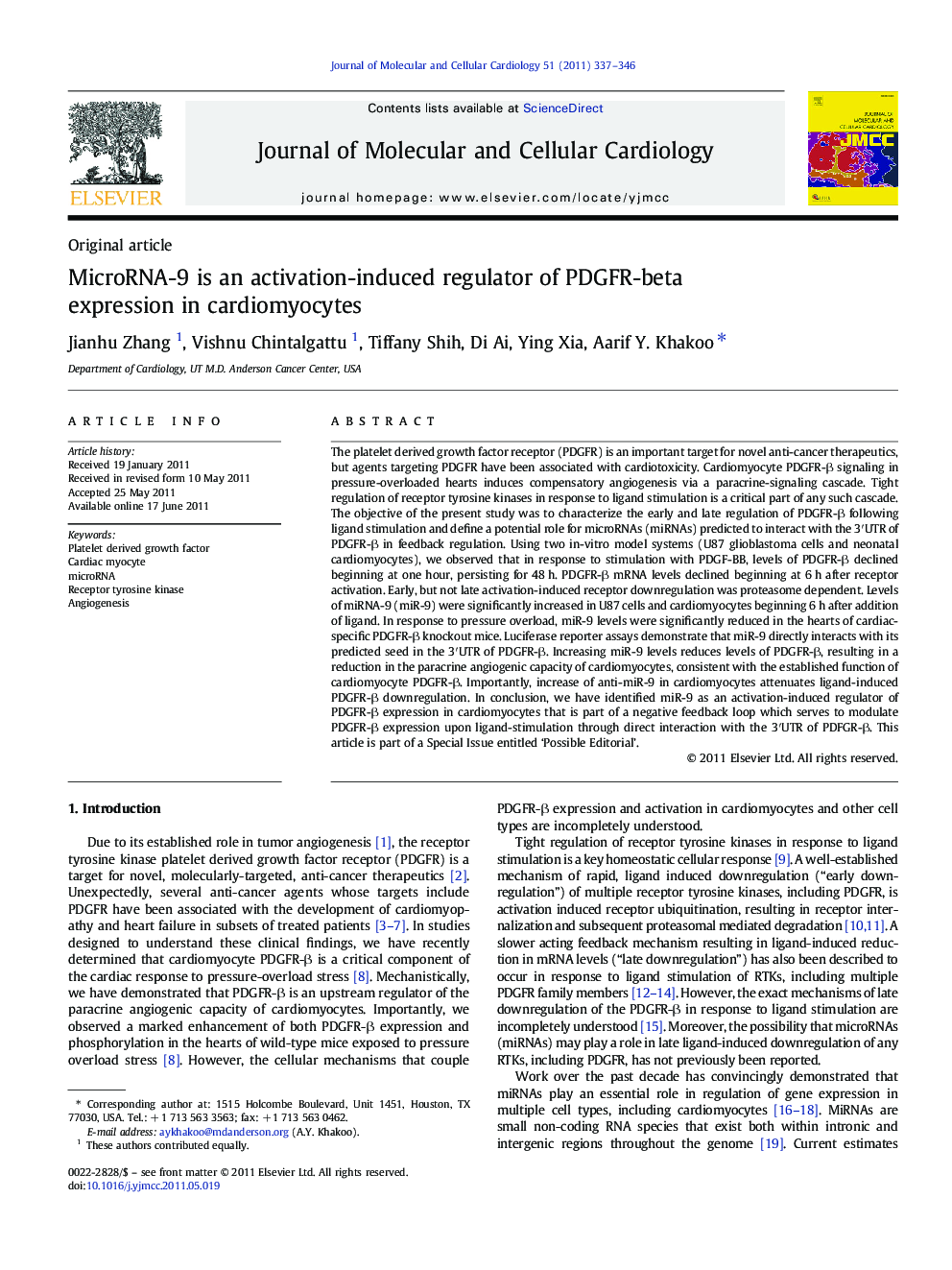| کد مقاله | کد نشریه | سال انتشار | مقاله انگلیسی | نسخه تمام متن |
|---|---|---|---|---|
| 2190792 | 1097819 | 2011 | 10 صفحه PDF | دانلود رایگان |

The platelet derived growth factor receptor (PDGFR) is an important target for novel anti-cancer therapeutics, but agents targeting PDGFR have been associated with cardiotoxicity. Cardiomyocyte PDGFR-β signaling in pressure-overloaded hearts induces compensatory angiogenesis via a paracrine-signaling cascade. Tight regulation of receptor tyrosine kinases in response to ligand stimulation is a critical part of any such cascade. The objective of the present study was to characterize the early and late regulation of PDGFR-β following ligand stimulation and define a potential role for microRNAs (miRNAs) predicted to interact with the 3′UTR of PDGFR-β in feedback regulation. Using two in-vitro model systems (U87 glioblastoma cells and neonatal cardiomyocytes), we observed that in response to stimulation with PDGF-BB, levels of PDGFR-β declined beginning at one hour, persisting for 48 h. PDGFR-β mRNA levels declined beginning at 6 h after receptor activation. Early, but not late activation-induced receptor downregulation was proteasome dependent. Levels of miRNA-9 (miR-9) were significantly increased in U87 cells and cardiomyocytes beginning 6 h after addition of ligand. In response to pressure overload, miR-9 levels were significantly reduced in the hearts of cardiac-specific PDGFR-β knockout mice. Luciferase reporter assays demonstrate that miR-9 directly interacts with its predicted seed in the 3′UTR of PDGFR-β. Increasing miR-9 levels reduces levels of PDGFR-β, resulting in a reduction in the paracrine angiogenic capacity of cardiomyocytes, consistent with the established function of cardiomyocyte PDGFR-β. Importantly, increase of anti-miR-9 in cardiomyocytes attenuates ligand-induced PDGFR-β downregulation. In conclusion, we have identified miR-9 as an activation-induced regulator of PDGFR-β expression in cardiomyocytes that is part of a negative feedback loop which serves to modulate PDGFR-β expression upon ligand-stimulation through direct interaction with the 3′UTR of PDFGR-β. This article is part of a Special Issue entitled ‘Possible Editorial’.
Research highlights
► MiR-9 regulates expression of PDGFR-β in cardiomyocytes in a feedback dependent manner.
► Brief exposure of isolated cardiomyocytes or glioblastoma cells to PDGF-BB enhances intracellular levels of miR-9.
► MiR-9 interacts with its predicted seed site in the 3′UTR of PDGFR-β.
► Increasing levels of miR-9 in cardiomyocytes reduces PDGFR-β levels and impairs the angiogenic capacity of cardiomyocytes.
► Overexpression of anti-miR-9 blocks ligand-induced downregulation of PDGFR-β in cardiomyocytes.
Journal: Journal of Molecular and Cellular Cardiology - Volume 51, Issue 3, September 2011, Pages 337–346